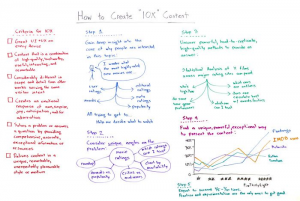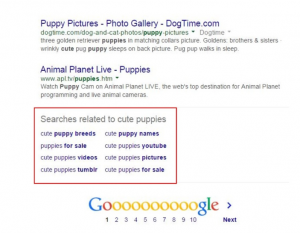How to Improve Your SEO Content Game this 2019
How to Improve Your SEO Content Game this 2019

Google continuously evolves, getting smarter and smarter in offering relevant, high-quality, up-to-date, and credible results to its users. Its current algorithm iterations can now track plagiarized content, over-optimized anchor texts, keyword stuffing, poor, on-and-off-page SEO, poor mobile usability and UX, and ad-centered content.
According to a report by MarketDrive and HubSpot, 82 percent of marketers say that SEO‘s effectiveness is on the rise, while 61 percent state that improving and growing their SEO strategies are their top inbound marketing priority. With this, online marketers are challenged to up their game and have a keen attention to detail to ensure that their SEO strategies can provide both short and long-term wins.
Adapting Your Content To Google’s Algorithms
Content has long been one of the foundations of a good SEO strategy. That said, as algorithms get smarter, businesses also need to make sure their content can keep up. Here are tips on improving your SEO content game and making sure you stay ahead of the curve:
-
Create qualty content at all times.
You’ve been hearing this a lot but we’ll say it again: content is the fire that will keep your brand going, so make sure it stays lit round-the-clock. What this means is, never underestimate how much impact high-quality content has in generating sales and making customers see you as a thought leader in your industry.
Quality content in 2019 means writing articles, creating an infographic, or producing videos that aim to educate and inform your readers. In order to qualify for quality content you should:
- Always keep your target audience in mind: what do they want to know? What are their common concerns in the industry? Is there recent news that you can weigh in on?
- Look at your competitors and assess their current content assets. Which topics are they not covering that you can provide? Is there a way for you to improve on or update an article that’s out there?
- Vary your content formats by creating FAQs, tutorials, slide decks, infographics, or case studies.
- Take advantage of the emotional impact of a good story.
But it’s not only about the quality-quantity counts as well, so make sure you have published enough content at regular intervals to keep your website updated.
-
Stay original.
Customers are always on the lookout for something authentic—the same goes for content. If your content is not original enough for customers to still find value in it, chances are, you won’t get the SEO results you were targeting. Nobody wants to get the same content they have read from every other website, so make sure that yours offer more value than your competitors.
A few strategies you can try include:

Source: https://moz.com/blog/how-to-create-10x-content-whiteboard-friday
- 10x content — Popularized by Rand Fishkin, 10x content means providing content that is 10 times better than those currently in the SERPs. This means, among others, adding more data, providing fresh angles to the same topic, and making sure it’s mobile-friendly.
- Share personal experiences –– As mentioned in the previous point, storytelling can generate an emotional response to your readers. Share your own stories (e.g. how your company started, the challenges you overcame, etc.). This could be in form of a regular blog post or an email newsletter. Whichever topic it is, no one will be able to copy it, as it is your own.
- Case studies –– Share your findings and actionable steps via case studies of a previous client or an ongoing project. This will help your readers apply the same strategies to their own businesses and reach the same results that you did. This would also amplify your credibility, as an expert in your field.
-
Improve your page speed.
In this fast-paced world, customers want to get everything done right at the moment it crossed their mind. Imagine how impatient they could get when going through a slow-loading website.
In fact, 79 percent of customers who are dissatisfied with a website’s performance would not come back to buy from it again. Slow page speeds can also negatively impact your revenue by as much as 16 percent.
Today’s growing market tells us why it’s important to run your website smoothly and seamlessly. More than 60 percent of consumers purchased online using their mobile device in the past six months alone.
On top of that, Google is now using mobile page speed as an important indicator of ranks in search results, so it’s best that you optimize your site for better UX and better search rankings by:
- Making sure your design is responsive, so your visitors can easily navigate your site regardless of the device they are using.
- Compressing your images, but see to it that the quality stays the same.
- Eliminating any Flash elements from your pages, as it can significantly slow down your website.
- Continuing to test your mobile site’s layout, as people use their fingers; not mouse pointers. Buttons should be far enough from each other and large enough for the average finger to tap on it.
- Using Google’s free mobile-friendly test tool, so you can see where else you need to improve.

Source: https://search.google.com/test/mobile-friendly
-
Optimize image quality.
Running your own online retail business means that you have to be very visual with how you present your products. This is where the value of a well-optimized photo comes in: image optimization means reducing the size of the image so that it will load faster on your customers’ devices without compromising its quality.
To optimize your images, you have to:
- Name it descriptively using the language your target market can easily understand.
- Compress your images that come in big file sizes. Study shows that you can compress images in PhotoShop for up to 95% without affecting the quality.
- Choose image dimensions and product angles wisely, so they would look good on both desktop and mobile devices.
- If you don’t have available stock images for your brand, there are royalty-free images you can use to load high-quality images on your website.
-
Leverage Header tags.
Header tags are used to break sections in your website. They are there for a purpose: it segments different thoughts and topics, making sure that your messages are understood by your readers in a more organized manner. It also helps break huge chunks of texts into smaller, bite-sized sections to make it more scan-friendly.
While it may not directly impact SEO, it can help improve user experience by helping readers easily find the content they need. Remember: better user experience means improving rankings in the SERPs, so make sure that you put clear headers throughout your web page
-
Improve your layout and formatting.
Creating a website with user experience in mind means improving your layout and formatting. This doesn’t only entail knowing where to put your icons or how to make it look more stunning than other websites; it also means knowing the psychology behind why a certain section should be placed in a specific area.
To help your customers easily scan and digest what your website is offering, take note of the following:
- Use font size and typography that can easily be read by the audience
- Use bold type and colors for important information
- Keep it short to avoid misunderstanding. Maintain proper line spacing in between
- For clarity, use bullets or numbered lists
- Use techniques such as siders, tabs, modal windows, and mega-dropdown-menus to organize site navigation
- Break up content into different subheads by using a proper header tag
-
Create attractive meta descriptions.
Search engines show meta descriptions in search results, especially when the keyword or keyword phrase typed in by the user is within the description. Meta descriptions are SEO specialists’ best friend: they exist to generate clickthroughs from search engines by encouraging users to click your link.

To do it right, make sure you do the following:
- Keep descriptions within 155 characters, so Google won’t truncate it
- Write in an active voice
- Include a call to action (e.g “Click here to get your free e-book!”)
- Refrain from using clickbait tactics, as a high number of visitors immediately leaving your site would increase your bounce rate and affect your search ranking
-
Start Blogging and Optimize Your Articles.
Make the most out of your website and start populating your own blog. All you have to do is create a separate page for your content, come up with catchy titles to attract click-throughs, and make the body as extensive as you can but not long enough to bore readers.
Of course, you also need to optimize your content so search engines can find them:
- Add internal links to other pages within your website
- Include high-quality images and use alt text to describe your image, so search engines will know what those images contain
- Link out related blog posts within the article body
- Provide a section for comments or reviews
- Share your content on social media to drive more people to your website
-
Add a call to action.
In any SEO strategy, linking one content to another is crucial. Don’t let customers finish reading your content at the end of your post without doing anything more.
Make sure that there’s a call to action, be it encouraging them to contact you for your services or leading them to a related post somewhere within your website.
Often called content layering and internal linking, this strategy allows you to keep your customers within your website by offering them more content after reading one.
-
Strategize keyword search
Your keywords are important in helping potential customers find you through search engines. To do this, you have to understand the market or audiences you’re trying to capture and recognize their needs. You should also know what they’re talking about and what they’re eager to learn.
Once you’ve gathered these data, it will be easier for you to identify the type of content they are looking for and produce it.

Source: https://blog.hubspot.com/marketing/how-to-do-keyword-research-ht
You can also look for related search terms. To do this, go to Google, type in a keyword related to your niche, scroll to the bottom of the results page, and look at the additional keywords. In your content, make sure that you’re using both long-tail and short keywords. You can also use Google Adwords Keyword Planner and Google Trends.
And if you want to further cut down the time you need for keyword research and looking for which content to produce, Content Success can do that for you. We’ll help you track your content’s performance and give you more article ideas that your readers will love.
Take Your Content To The Next Level
Acing your SEO game takes a lot of trials-and-errors, before finding out which strategy would work for you. Remember that this is a long-term game. Keep producing high-quality content with the right amount of links, and Google will reward you.
If you found these tips helpful, do let us know in the comments section below. Feel free to also add your own strategies and help out your fellow content creators.
The post How to Improve Your SEO Content Game this 2019 appeared first on ReadWrite.
(73)

